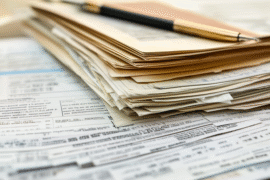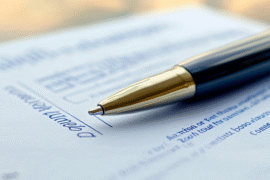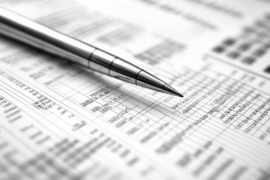This article may contain references to products or services from one or more of our advertisers or partners. We may receive compensation when you click on links to those products or services. Nonetheless, our opinions are our own.
- Key Highlights
- Introduction
- Understanding Depreciation Basics
- Introduction to Double Declining Balance Method
- Definition of Double Declining Balance
- The Differences Between Double Declining Balance and Other Methods
- Beginner’s Guide to Double Declining Balance
- Practical Applications of Double Declining Balance
- Conclusion
- Frequently Asked Questions
- Recommended Reads
Key Highlights
- The Double Declining Balance (DDB) method helps reduce asset costs quickly in the early years of ownership.
- Businesses can report higher expenses upfront, aiding in cash flow management and tax savings.
- DDB accelerates depreciation more rapidly than methods like the straight-line approach.
- It is ideal for assets that depreciate quickly, such as electronics or machinery.
- Accurate financial reporting and regulatory compliance are essential when using DDB.
- Accounting tools can simplify the use of DDB for maintaining financial records.
Introduction
Managing depreciation effectively is essential for maintaining accurate business records and ensuring compliance with accounting standards. The Double Declining Balance (DDB) method offers a faster approach to recognizing asset depreciation, aligning cost recognition with early asset usage. By accelerating expense recognition, DDB supports improved cash flow and tax planning, especially for small businesses with rapidly depreciating assets.
Understanding Depreciation Basics
What is Depreciation?
Depreciation refers to allocating the cost of a tangible asset over its useful life. This process accounts for wear, tear, and obsolescence. Depreciation transforms the original purchase price into annual expense deductions, which help represent the asset’s declining book value over time.
For example, if a machine is purchased for $15,000 and is expected to have a salvage value of $2,000 after five years, depreciation helps distribute that $13,000 loss in value systematically.
Depreciation supports financial transparency by aligning asset costs with the periods in which they provide economic benefit while also reducing taxable income.
Importance of Depreciation in Business
Depreciation is a critical component of business accounting that influences both tax liabilities and capital planning. Accurate depreciation reporting:
- Reflects the true book value of company assets
- Reduces taxable income by allowing expense deductions
- Aids in capital budgeting by forecasting asset replacement timelines
- Ensures regulatory compliance with financial reporting standards
For instance, claiming depreciation on a $25,000 delivery van could reduce taxable income, allowing those savings to be reinvested into operations or new assets.
Introduction to Double Declining Balance Method
The Double Declining Balance (DDB) method is a form of accelerated depreciation. It deducts a larger expense in the early years of an asset’s life and smaller amounts later. This approach better reflects usage patterns for assets that lose value quickly after purchase.
Definition of Double Declining Balance
The Double Declining Balance method doubles the straight-line depreciation rate. To calculate it:
- Determine the straight-line rate by dividing 100% by the asset’s useful life.
- Multiply that rate by two.
- Apply the result to the current book value each year.
Example Calculation:
| Year | Book Value | Depreciation Rate (40%) | Annual Depreciation | New Book Value |
|---|---|---|---|---|
| 1 | $10,000 | 40% | $4,000 | $6,000 |
| 2 | $6,000 | 40% | $2,400 | $3,600 |
| 3 | $3,600 | 40% | $1,440 | $2,160 |
The book value continues to decrease until it reaches the estimated salvage value.
The Differences Between Double Declining Balance and Other Methods
Compared to other depreciation methods, DDB allows higher deductions early in an asset’s life:
- Straight-line spreads the cost evenly over the useful life.
- DDB applies a higher rate to the declining book value, resulting in faster early depreciation.
- Sum-of-the-Years’ Digits is another accelerated method, but DDB often results in larger early deductions.
Comparison Table: Depreciation Methods
| Method | Expense Pattern | Best For |
|---|---|---|
| Straight-Line | Equal each year | Long-life, steady-use assets |
| Double Declining Balance | Higher early years | Technology, vehicles, manufacturing |
| Sum-of-the-Years’ Digits | Moderately front-loaded | Equipment with early productivity |
Beginner’s Guide to Double Declining Balance
Necessary Tools and Resources
To apply DDB, the following resources are recommended:
- Accurate cost data: Purchase price, setup, and delivery costs
- GAAP-compliant accounting software: Automates depreciation schedules
- Excel formula: Use =DDB(cost, salvage, life, period) for manual calculation
- Asset management system: Tracks asset condition, age, and value
These tools ensure accurate depreciation tracking and simplify reporting for audits or financial statements.
Step-by-Step Guide to Double Declining Balance
Step 1: Determine the Asset Cost
Include all related expenses such as purchase price, delivery, and setup costs. This forms the asset’s total cost basis.
Step 2: Calculate the Depreciation Rate
Use the formula:
(100% ÷ Useful Life) × 2 = DDB Rate
Example: A 5-year life → (100% ÷ 5) × 2 = 40%
Step 3: Apply the Depreciation Formula
Each year, multiply the current book value by the DDB rate. Continue until the asset reaches its salvage value.
Example:
Year 1: $10,000 × 40% = $4,000 depreciation
Year 2: $6,000 × 40% = $2,400 depreciation
Avoid reducing the asset’s book value below its salvage value.
Practical Applications of Double Declining Balance
When to Use Double Declining Balance
Use DDB when:
- The asset provides more benefit or revenue early in its life
- Rapid depreciation provides greater tax deductions sooner
- Accurate early-year cost representation is needed
This method aligns with accelerated usage and revenue patterns common in short-lifespan assets.
Types of Businesses That Benefit Most
Industries that benefit from DDB include
- Technology companies: Rapid innovation leads to short asset life cycles
- Manufacturing firms: Heavy machinery depreciates quickly under frequent use
- Transportation providers: Fleet vehicles lose value faster due to high mileage
- Construction companies: Equipment is often used intensively and replaced regularly
These businesses value immediate tax benefits and accurate short-term asset tracking.
Conclusion
The Double Declining Balance method offers small businesses a structured, accelerated approach to asset depreciation. By front-loading expenses, companies can manage early cash flows, benefit from tax deductions, and reflect asset usage more realistically. This method is especially beneficial for fast-depreciating assets common in tech, transport, and manufacturing sectors. Proper application of DDB supports accurate financial reporting and more informed capital planning.
Frequently Asked Questions
How is the double-declining balance method calculated?
The method involves multiplying the asset’s book value by double the straight-line rate each year. The formula is
Depreciation = Book Value × (2 ÷ Useful Life)
Repeat annually, ensuring the asset does not depreciate below its salvage value.
What makes the double-declining balance method effective?
DDB provides higher expense deductions in the early years of asset ownership. This aligns with how certain assets lose value rapidly and supports tax planning by reducing early taxable income.
Is the double-declining balance method suitable for all assets?
No. DDB is most effective for assets with short useful lives and rapid wear. This includes electronics, vehicles, and certain machinery. It is not suitable for assets expected to depreciate evenly over time.
What are the long-term financial impacts of using DDB?
DDB reduces taxes in the early years but lowers book value faster. This affects financial ratios such as return on assets and asset turnover. Businesses should evaluate these impacts in their long-term accounting strategy.

Reviewed and edited by Albert Fang.
See a typo or want to suggest an edit/revision to the content? Use the comment form below for feedback.
At FangWallet, we value editorial integrity and open collaboration in curating quality content for readers to enjoy. Much appreciated for the assist.
Did you like our article and find it insightful? We encourage sharing the article link with family and friends to benefit as well - better yet, sharing on social media. Thank you for the support! 🍉
Article Title: Double Declining Balance: Fast-Track Depreciation for Small Biz
https://fangwallet.com/2025/05/19/double-declining-balance/The FangWallet Promise
FangWallet is an editorially independent resource - founded on breaking down challenging financial concepts for anyone to understand since 2014. While we adhere to editorial integrity, note that this post may contain references to products from our partners.
The FangWallet promise is always to have your best interest in mind and be transparent and honest about the financial picture.
Become an Insider

Subscribe to get a free daily budget planner printable to help get your money on track!
Make passive money the right way. No spam.
Editorial Disclaimer: The editorial content on this page is not provided by any of the companies mentioned. The opinions expressed here are the author's alone.
The content of this website is for informational purposes only and does not represent investment advice, or an offer or solicitation to buy or sell any security, investment, or product. Investors are encouraged to do their own due diligence, and, if necessary, consult professional advising before making any investment decisions. Investing involves a high degree of risk, and financial losses may occur including the potential loss of principal.
Source Citation References:
+ Inspo
There are no additional citations or references to note for this article at this time.












































